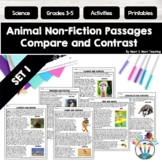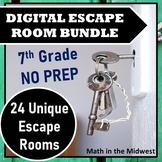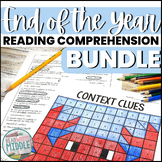79 results
7th grade astronomy simulations under $5

Day and Night Earth's Rotation Activity
Rotation, Day and Night and Time Zones become clear with this spinning paper model perfect for Interactive Notebooks (INBs). This lesson plan and hands-on simulation involves students spinning a mini-model of the Earth as it experiences daylight and darkness. It gives kids a visual representation of why we have time zones!
Includes:
Lesson Plan
Spinner Printable
Student worksheet
Teacher Answer Key
Check out the preview document to see the paper Earth spinner included in this product.
Do
Subjects:
Grades:
4th - 7th
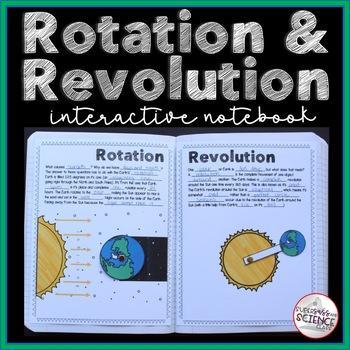
Earth's Rotation and Revolution Interactive Notebook
No student has been into space to see the Earth rotate on it's axis or revolve around the Sun (as cool as that would be)! These notebook pages give them a concrete understanding of these two very important motions.
Subjects:
Grades:
5th - 7th
NGSS:
MS-ESS1-1

Tides Lab Using Water Balloons - Hands On Experience That Kids LOVE!
This lab is a really fun way to use discovery and investigation to teach students how gravity and inertia cause tides, along with the moon. The cost is low (a package of water balloons and yarn) and it is a great activity to get kids moving and outside. They work in small groups and go through a series of steps and procedures and record data. This was one of the most fun labs of the year for students and was instrumental is having kids understand why we have high tides on the side of the Earth c
Subjects:
Grades:
6th - 12th
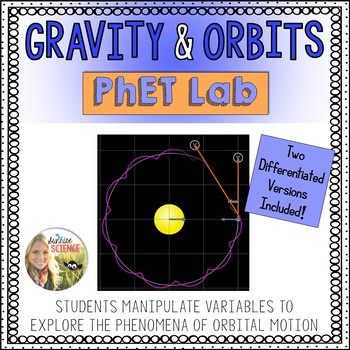
Gravity and Orbits PhET Lab
This virtual PhET Gravity and Orbits simulation lab provides students opportunity to experiment with the variables that affect the force of gravity between two objects and the concept of orbital motion. This inquiry activity can be used in a physical science class while students are exploring motion and gravity. This could also be incorporated during an astronomy unit or even as an inquiry into the concept of gravity alone. There are two differentiated versions of this activity:The green circle
Subjects:
Grades:
7th - 9th
NGSS:
MS-ESS1-2
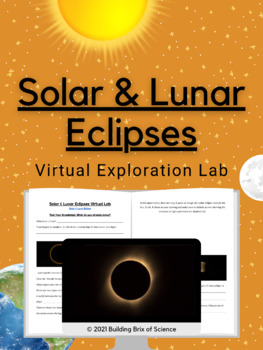
Solar & Lunar Eclipses Virtual Exploration Lab
What is the difference between a Solar and Lunar eclipse? In this virtual lab, students will manipulate the Earth & Moon to determine what causes an eclipse. Students will also:⚗️Test their Pre-Existing Knowledge of an Eclipse⚗️Identify the Lunar Phases that occur during Eclipses⚗️Draw Diagrams of a Solar & Lunar Eclipse⚗️Compare & Contrast Partial and Total EclipsesNOTE: This activity links to the free Interactive from Earth Space Lab. Check it out below!Solar & Lunar EclipsesPu
Subjects:
Grades:
6th - 12th
Types:
NGSS:
MS-ESS1-1
Also included in: Virtual Science Labs Full Exploration Activity Bundle

Gravity and Orbits PhET Simulation
Students use a PhET computer simulation of the Earth and Sun orbit to see how different variables affect the orbit and the force of gravity between the two objects. In this computer model, students change variables (mass and distance) of the Earth and Sun to see how they affect the force of gravity and the orbit of the Earth. In the first part of the activity, students observe the Earth’s orbit around the sun under ”normal” conditions. In part 2, students look at the relationship between mass a
Subjects:
Grades:
6th - 8th
Types:
NGSS:
MS-PS2-4
, MS-ESS1-2
Also included in: Gravity and Orbits in the Solar System Bundle For Middle School
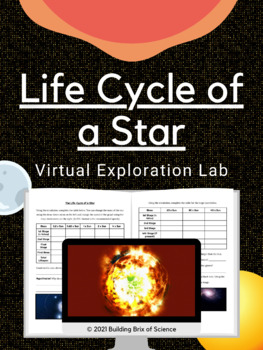
Life Cycle of a Star Virtual Exploration Lab
What are the stages of a star's life? In this virtual lab, students will use mathematical data to analyze the life cycles of different stars based on their initial mass. Students will also:⚗️Test their Pre-Existing Knowledge of Stars⚗️Analyze the Fusion of Hydrogen Atoms into Helium⚗️Explain the Correlation between a Star's Mass and its' Age⚗️Investigate the Formation of Neutron Stars & Black HolesNOTE: This activity links to the Star in the Box Simulation from Las Cumbres University. Check
Subjects:
Grades:
6th - 12th
Types:
NGSS:
HS-ESS1-3
, HS-ESS1-1
Also included in: Virtual Science Labs Full Exploration Activity Bundle
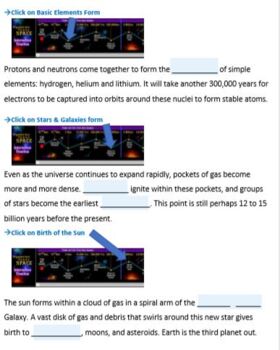
Big Bang Evidence: Red Shift - Virtual Lab Simulation
NO FLASH NEEDED! Students will explore the early steps of the Big Bang and then prove the Universe is expanding by manipulating the light of a galaxy moving away from or towards Earth. This virtual lab is excellent for remote or in-class laboratory exploration. The virtual lab simulation worksheet contains auto-fill in blanks, so no annotation software is needed. The links for the free sites used are located within the lab.
Subjects:
Grades:
6th - 11th
Types:
CCSS:
NGSS:
MS-ESS1-4
, MS-ESS1-2
, MS-ESS1-3
, HS-ESS1-2
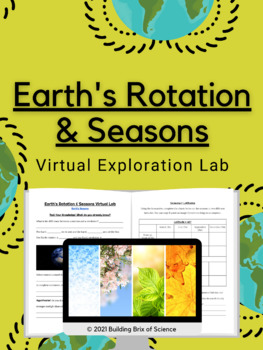
Earth's Rotation & Seasons Virtual Exploration Lab
How does the Earth's tilt result in the four Seasons? In this virtual lab, students will observe the Earth rotating on its axis and how it's tilt changes as it revolves around the Sun. Students will also:⚗️Test their Pre-Existing Knowledge of Rotation vs. Revolution⚗️Describe how the Earth's Rotation results in Day & Night⚗️Analyze how different Seasons occur in different Hemispheres simultaneously⚗️Create Visual Models of the Earth's Tilt at different LatitudesNOTE: This activity links to t
Subjects:
Grades:
6th - 12th
Types:
NGSS:
MS-ESS1-1
Also included in: Virtual Science Labs Full Exploration Activity Bundle
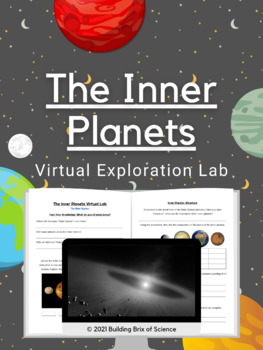
The Inner Planets Virtual Exploration Lab
What do the Inner Planets have in common? In this virtual lab, students will investigate the four inner planets of the Solar System and how they compare to one another. Students will also:⚗️Test their Pre-Existing Knowledge of the Solar System⚗️Identify the Inner Planets based on Size & Appearance⚗️Record Data such as Number of Moons, Orbit Period, & Surface Characteristics⚗️Analyze the Mantle, Crust, & Core Compositions of the Inner PlanetsNOTE: This activity links to the Nine Plane
Subjects:
Grades:
6th - 12th
Types:
NGSS:
MS-ESS1-3
Also included in: Virtual Science Labs Full Exploration Activity Bundle
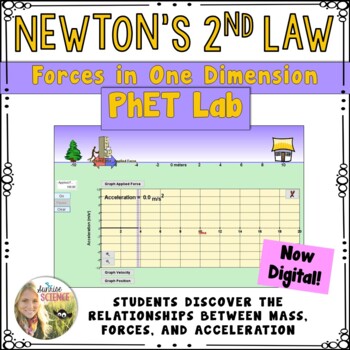
Newton's Second Law PhET Lab
This lesson using the Forces in One Dimension PhET virtual lab will allow students to construct their own understanding of Newton’s Second Law of Motion without necessarily being told the name of the Law itself. Students at this point in their physics unit will need to understand the concept of mass, motion with respect to a reference point, that an object in motion always changes its position and may change its direction, that the speed of an object is determined by the distance it travels in a
Subjects:
Grades:
7th - 9th
Types:
NGSS:
MS-PS2-2
, HS-PS2-1
Also included in: Motion and Forces Unit | Speed Velocity Acceleration Newtons Laws Forces
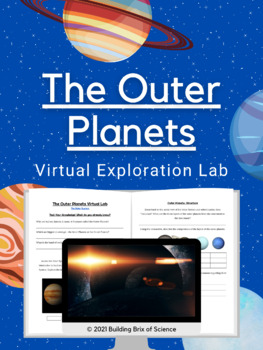
The Outer Planets Virtual Exploration Lab
What do the Outer Planets have in common? In this virtual lab, students will investigate the four Outer Planets of the Solar System and how they compare to one another. Students will also:⚗️Test their Pre-Existing Knowledge of the Solar System⚗️Identify the Outer Planets based on Size & Unique Features⚗️Record Data such as Number of Moons, Orbit Period, & Surface Characteristics⚗️Analyze the Atmospheric, Mantle, & Core Compositions of the Outer PlanetsNOTE: This activity links to the
Subjects:
Grades:
6th - 12th
Types:
NGSS:
MS-ESS1-3
Also included in: Virtual Science Labs Full Exploration Activity Bundle

Teamwork Icebreaker Spaceship Activity
Elevate teamwork and camaraderie in your classroom with the Teamwork Icebreaker Spaceship Activity – an immersive and engaging group exercise tailored for middle and high school students. In this thrilling simulation, students face the impending impact of a giant meteor on Earth, and their mission is to select a limited number of individuals from a predetermined list to embark on a journey to a new planet. The challenge lies in justifying their choices, sparking discussions and strategic thinkin
Subjects:
Grades:
7th - 10th
Types:
Also included in: Earth and Space Science Curriculum Bundle

Moon Phases: Phases of the Moon Activity with Viewing Wheel Distance Learning
This Phases of the Moon activity will help your students quickly and easily understand why we see the phases of the Moon as we do!***Completely Redesigned March 2020.***-Great for distance learning - students may complete the activity with little to no teacher assistance.-Activity is now a TpT Digital Activity. This allows you to post student instructions to your Google Classroom - saving you time and photocopying. (Worksheet and spinner still require photocopying/printing.)Step-by-step student
Subjects:
Grades:
4th - 9th
NGSS:
MS-ESS1-1

Moon Phases Activity | Genially Interactive | Digital Resource
Getting ready the study the moon and the phases of the moon? This moon phase digital activity uses the power of Genially to engage students in learning about what causes the phases of the moon! Perfect for small group work or independent practice. Students click to read nonfiction text, explore diagrams, pictures and games to build a strong understanding of how the moon's orbit and our perspective impact our view of the moon throughout the month. Digital interactive games are very motivating f
Subjects:
Grades:
6th - 7th
Types:
NGSS:
MS-ESS1-1
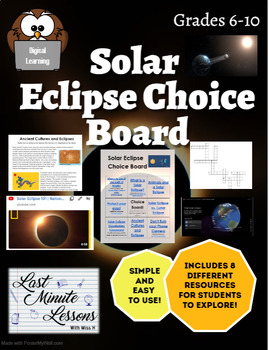
Digital Resource: Solar Eclipse 2024 Choice Board and Resources
Includes links to articles, videos, images, and simulations for students to explore as they learn about the solar eclipse. Topics covered in the choice board include:- What is a solar eclipse?- Protecting your eyes- The path of totality- How animals react- Solar vs. Lunar Eclipse- Digital vocabulary crossword puzzle- Ancient cultures and the solar eclipse- How to safely use your phone to take a picture
Subjects:
Grades:
6th - 10th
Types:
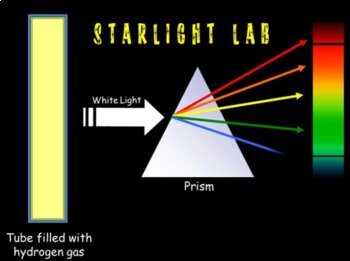
Analyzing Starlight / Spectral Analysis Lab (Digital and Face to Face)
There are few things as fun as a spectral analysis lab in an astronomy unit. I have always had the good fortune of having all of the materials to run this lab in person – complete with spectral tubes and prism glasses – but I realized that not all teachers had the same opportunity. All of the simulations I found online simply weren’t high quality or very engaging, that’s why I put this package together. In this download you will find three versions of a Starlight Lab, all of them designed to tea
Subjects:
Grades:
7th - 12th
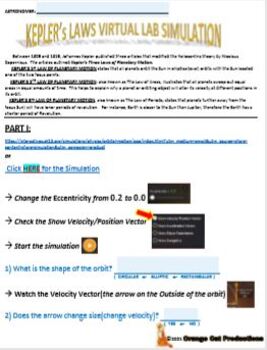
KEPLER'S LAWS VIRTUAL LAB SIMULATION
FLASH NOT REQUIRED!! KEPLER'S LAWS VIRTUAL LAB SIMULATION uses online, non-flash simulations. The lab has easy, step-by-step instructions that include thumbnails to show students where they need to click. The lab worksheet also includes auto-fill text boxes so no annotation software is needed for the students to fill in answers. This lab is excellent for remote or in-class laboratory exploration.
Subjects:
Grades:
5th - 12th
Types:
CCSS:
NGSS:
HS-ESS1-4
, MS-ESS1-2
, MS-ESS1-3
, MS-ESS1-1
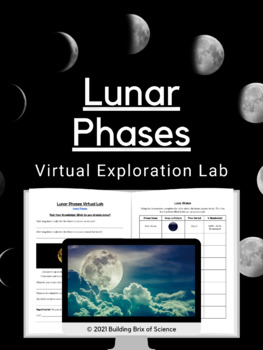
Lunar Phases Virtual Exploration Lab
How does the Moon's orbit result in the Lunar Phases? In this virtual lab, students will observe the different phases as the Moon revolves around the Earth. Students will also:⚗️Test their Pre-Existing Knowledge of the Moon⚗️Describe how the Moon's Rotation & Revolution keep it facing the Earth⚗️Identify & Draw the Lunar Phases in the Correct Order⚗️Analyze how Two People on Earth can see the same Lunar PhaseNOTE: This activity links to the free Interactive from Github. Check it out belo
Subjects:
Grades:
6th - 12th
Types:
NGSS:
MS-ESS1-1
Also included in: Virtual Science Labs Full Exploration Activity Bundle

Asteroid Impact Interactive(Simulation) Lab
In Part I of this Interactive/Simulation Lab, Students create their own asteroid by adjusting the variables (Velocity, Diameter, Composition, etc.) and then choose where they want their asteroid to Impact. After impact, the interactive will display the damage data.In Part II, students will design asteroids with Solar System objects as targets.An answer key is provided (although, answers will vary according to students choices). Word and PDF files included. An extra credit section available at
Subjects:
Grades:
6th - 12th, Higher Education, Adult Education
Types:

Solar Eclipse Lesson Activity Mini Booklet Experiment and Craft 2024
In this mini-booklet, students will be learning about the science involved in Solar Eclipses. This 16 page booklet provides a fantastic lesson for all aspects involved in solar eclipses including an Experiment, Craft Activity, Lesson Presentation with response questions and research. Students have the option of the black and white version that they can color or the colored version!The Lesson and Teacher Presentation (Pictures of the booklet in color):The students will follow along as the teacher
Subjects:
Grades:
3rd - 7th
Types:

Mars Launch Lab - Kepler's Laws - Orbits Virtual Simulation Lab
Mars Launch Lab - Kepler's Laws - Orbits Virtual Simulation Lab consists of three parts. In Part I, Students follow a short (40 second) video with guided notes/questions. After the quick video, students play a game-like simulation where they need to find the correct date to minimize the time to get to Mars.In Part II, students use another simulation and adjust the orbital radius of a satellite to see the changes in Kinetic energy, orbital velocity, and time.In Part III, students use a third s
Subjects:
Grades:
7th - 12th, Higher Education, Adult Education
Types:
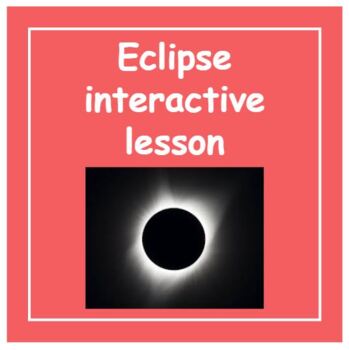
What is an eclipse? Interactive Lesson (works as sub plans, too)
This interactive lesson teaches students about eclipses. Students engage with two interactive websites using this resource. Students will even run a simulation to see what the Solar Eclipse of 2017 looked like from their location. The write-up has students working individually as they engage with two interactive websites. This activity also pairs nicely with an interactive Pear Deck slide show as a follow-up that I also have available in my Teachers Pay Teachers store both separately and as
Subjects:
Grades:
6th - 12th
Types:
NGSS:
MS-ESS1-1
Also included in: Eclipse interactive lesson and practice problems

Why You Can't See Stars in A City Interactive Virtual Simulation Activity Lab
This Interactive Virtual Activity (or Lab) uses three simulations. Students see how adding artificial light (Light Pollution) makes it difficult to see the night sky. The activity includes step by step instructions with visual snip cues, making it accessible for all kinds of learners. Besides answering questions throughout the activity, students aer asked to graph the data accumulated and draw conclusions. This activity would be a great addition to any astronomy mini-lesson. Included are .
Subjects:
Grades:
5th - 12th, Higher Education, Adult Education
Showing 1-24 of 79 results




